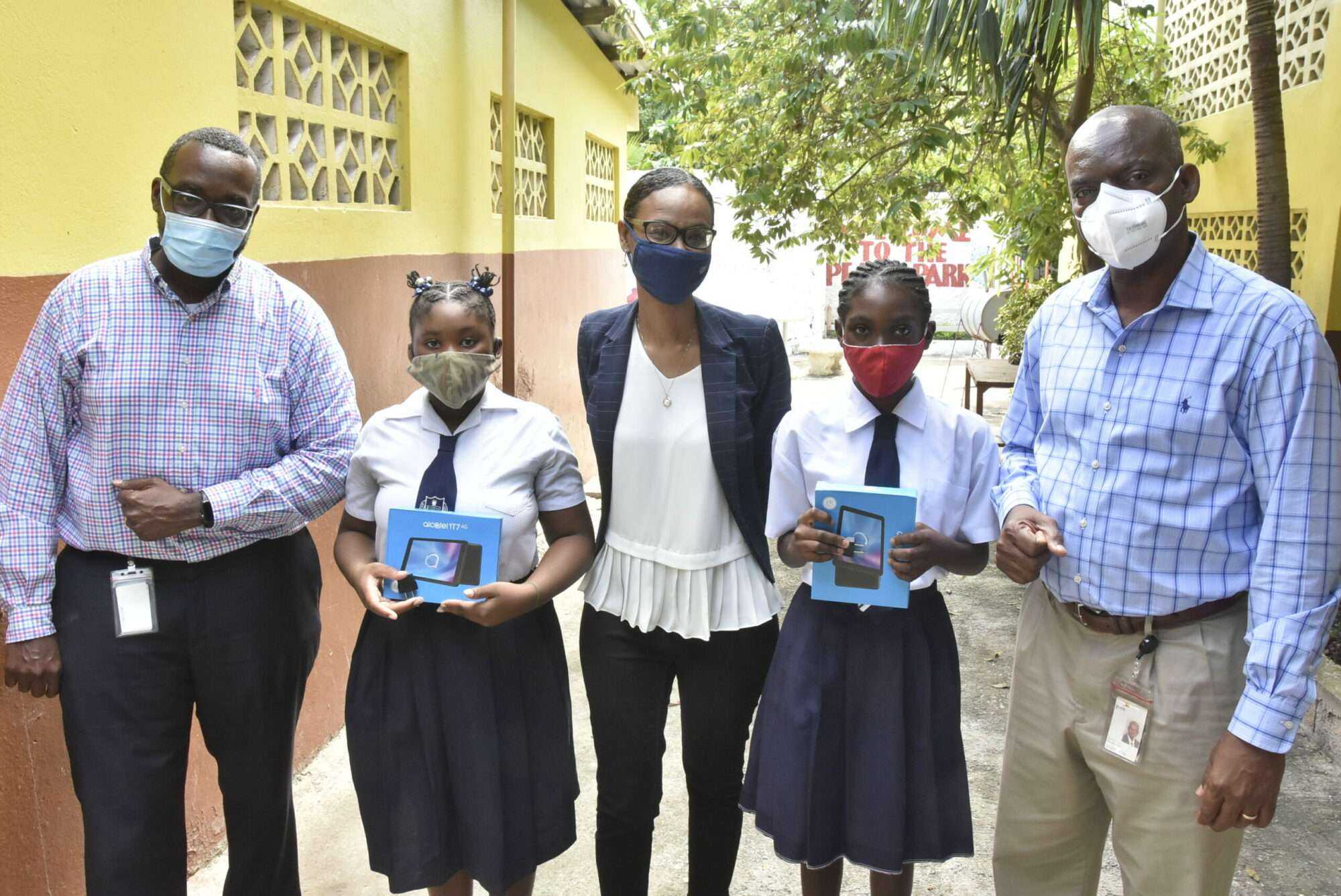BY LA SHAWNA GRIFFITH
Christmas came a bit earlier for 121 grade six students of Holy Family Infant and Primary School. They received a donation of 45 tablets from past student Bruce Scott (a partner at PWC Jamaica) and his fellow partners.
The donations were made on Friday, December 11th, 2020. This donation allowed the school to be 100% tech accessible. According to the Principal of Holy Family Infant and Primary School Christopher Wright, the cohort of grade six students had a participation level of approximately 30% at the initial stages of the COVID-19 protocols.
Following this contribution of tablets for the students of the Programme of Advancement through Health and Education (PATH) the figure increased to approximately 43% and then rose to 52% as parents began to take their own initiatives. Since the donation from PWC Jamaica the school anticipates that Grade six students’ participation will rise to 100%.
Even before the lockdown that has resulted from the pandemic, technology was beginning to appear in the classroom. Some teachers viewed technology as a distraction, but now it has become a part of life. Teachers have now had to harness the power of digital devices, apps and tools to increase engagement, encourage collaboration, and enhance student learning.
Principal Wright said the school administration had to forge partnerships in the community in order for this initiative to be successful.
“Strong partnerships ensure the children can get some of things they are unable to access; and so, I am very elated at this time. We are looking forward to the many things that will be made possible with this partnership. It warms my heart even further as it’s led by somebody [Bruce Scott] who can intimately relate to a school like this and the children who are struggling financially.”
Wright explained that outside of the need for tablets, one of the major issues the school has had is student’s Internet access.
“Some persons have issues at home as it relates to connectivity. And we have tried to rectify that to the best of our ability as a school, but there are children that live a bit of a distance away from here and that poses a challenge with connectivity and so forth. So, we hope that parents will take advantage of this initiative to provide what is needed and necessary at this time for the children. It is important to be connected, and to not only have a tablet as a toy but as a tool.”

